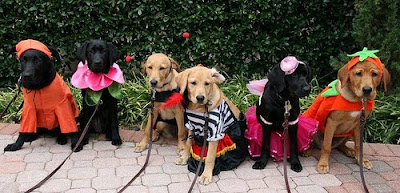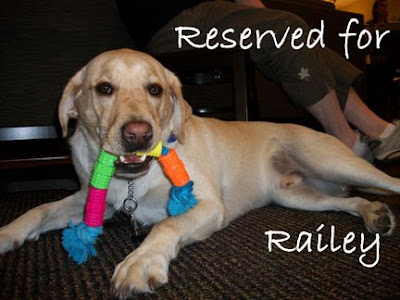The following is a letter we received today here at GDB from the Transportation Security Administration (TSA) describing the new techniques being used at airport security checkpoints. We thought it was worth sharing since many of you will be traveling during the holidays. Happy Thanksgiving, and safe travels!
Dear Members of the Disability Community:
You have probably been hearing and seeing a lot in the media lately about the Transportation Security Administration's new screening procedures. As much of what has been circulating has been exaggerated and/or inaccurate, and with the holiday travel season rapidly approaching, I wanted to take this opportunity to clarify our procedures and hopefully address concerns you may have.
TSA began piloting the use of Advanced Imaging Technology (AIT) in 2007. It is a highly effective security tool, and represents the best technology available today to screen passengers for both metallic and non~metallic threats. Currently, there are 411 imaging technology units at 69 airports. The most important thing you need to do to prepare for AIT screening is to make sure that you remove everything from your pockets (including your wallet) and also remove any bulky jewelry.
TSA uses two types of imaging technology, millimeter wave and backscatter. The backscatter machines use narrow, low-intensity X-ray beams scanned over the body surface at high speed. The amount of radiation a person receives is minuscule; a person receives more radiation naturally each hour than from one screening with a backscatter unit. In fact a traveler is exposed to less radiation from one AIT scan than from 2 minutes of an airline flight. It produces an image that resembles a chalk-etching, and has a privacy filter applied to the entire body.
Millimeter wave technology bounces harmless electromagnetic waves off of the human body to create a black and white image. The energy emitted by millimeter wave technology is thousands of times less than what is permitted for a cell phone. Millimeter wave technology has a privacy filter that blurs facial features.
This technology is safe. Multiple third-party scientific and health organizations, including the Food and Drug Administration (FDA) and Johns Hopkins University, have collected and analyzed data and concur that this technology is safe for both officers and passengers. For more information about safety see
http://www.tsa.gov/travelers/index.shtm.
Great efforts have been taken to ensure passengers' privacy in implementing this technology. To that end, all images generated by imaging technology are viewed in a remotely-located security location that is not visible to the public. The officer assisting the passenger cannot view the image, and as an additional precaution, the officer viewing the image is in a remote location and never sees the passenger.
In addition to the privacy filters discussed previously, imaging technology cannot store, export, print, or transmit images. All images are deleted from the system after they are reviewed by the remotely located operator, and all machines have zero storage capability because they are disabled by the vendor before they reach airports. No cameras, cellular telephones, or any device capable of capturing an image is permitted in the resolution room.
Imaging technology has had a very high rate of acceptance among the traveling public. Since imaging technology has been deployed at airports, over 99 percent of passengers choose to be screened by this technology over alternative screening procedures. According to a new CBS poll, 4 out of 5 Americans support the use of advanced imaging technology at airports nationwide (cbsnews.com). Visit
http://www.tsa.gov/approach/tech/ait/index.shtm to see more independent polling on AIT acceptance.
While you have probably also been hearing a lot about pat-downs lately, the use of pat-downs is not new. Pat-downs have long been one of the many security measures TSA and many other countries have used in its risk-based approach to help detect hidden and dangerous items such as explosives like the one we saw in the failed terrorist attack last Christmas Day. Pat-downs are primarily used to resolve alarms that occur at a walk-through metal detector, if an anomaly is detected during AIT screening, or during random screening. In any of these situations you will be given a pat-down before you're able to continue on to your flight. External medical devices can be detected by AIT. Remember if you are uncomfortable being patted-down in public you can always ask for a private screening, and if you have areas that are sensitive or have an external medical device, please let the security officer know.
AIT screening is optional for everyone; however, passengers who opt out of screening by AIT or walk-through metal detectors must undergo alternate screening using a pat-down. There is nothing punitive about our measures; it just makes good security sense. Given that those who wish to do us harm have moved towards the use of artfully concealed smaller items and homemade explosives, the pat-down you receive will be more thorough than what you may have received previously. Pat-downs are conducted to provide an equivalent degree of screening and ensure that the passenger is free of all prohibited items.
Some people with disabilities are ineligible for screening using AIT including the following: people who use wheelchairs and scooters who cannot stand; anyone who cannot stand with their arms raised at shoulder level for the 5-7 second duration of the scan; anyone who is not able to stand without the use of a cane, crutch, walker, etc; people who use service animals; people using or carrying oxygen; and individuals accompanying and providing assistance to those individuals described above. These people will be screened using alternate screening techniques including pat-downs.
I hope that you find the information provided useful and wish you safe and happy travels. We will continue to work with you, our partners, to implement procedures that screen all passengers with the dignity and respect they deserve. Should you have additional questions, please direct them to Rhonda Basha, Director, Office of Disability Policy and Outreach (ODPO) at rhonda.basha@dhs.gov or Brewster Thackeray, Senior Policy Advisor, ODPO at brewster.thackeray@tsa.dhs.gov.
Kimberly Alton
Special Counselor Transportation Security Administration
The letter above did spark some questions when it was received as how this affects Guide Dogs specifically. The following are some tips and explanations provided by GDB Class Supervisor Jim Dugan.
What to expect if you are blind or visually impaired and use a service dog
If you are blind or visually impaired and use a service dog, both you and your dog will have to go through screening.
What choices, if any, do you have in the screening process?
- You will not be eligible for screening using Advanced Imaging Technology (AIT).
- You can choose to undergo Walk Through Metal Detector (WTMD) screening, or request a pat-down. A pat-down may be conducted in a private screening area by an officer of the same gender.
IF YOU AND YOUR DOG GO THROUGH THE WTMD TOGETHER AND SET OFF THE ALARM, BOTH OF YOU WILL HAVE TO UNDERGO ADDITIONAL SCREENING.
- To resolve the passenger alarm, the Transportation Security Officer (TSO) will conduct a pat-down to verify that no prohibited items are present.
- Since your dog’s harness most likely contains metal, the TSO will need to physically inspect your dog and its belongings (collar, harness, leash, backpack, vest, etc.) in order to resolve the alarm. Although the dog’s harness will not be removed, it and other items that s/he may be carrying (such as a backpack) are subject to screening.
- Note: If you and your dog walk through the WTMD individually and one or both of you set off the alarm, additional screening will be conducted as described above on whoever causes the alarm.
What you can do to facilitate the screening process
- Inform the Security Officer that the animal accompanying you is a service animal and not a pet, and carry appropriate identification to verify this fact.
- Inform the Security Officer how you and your dog will walk through the WTMD (walking together or with the service dog walking in front or behind you).
- Keep control of your service animal while the TSO conducts the screening.
What else you can expect
The TSO should:
- Offer to assist you in placing your accessible property on the X-ray belt.
- Provide you with verbal instructions regarding the screening process.
- Allow you to stay with your dog throughout the entire screening process.
- Allow you to go to the front of the screening line if you choose to do so.
- Allow you to go to the front of the line to be re-screened when you have to leave the checkpoint to take your animal to a service animal relief area.
Other important things to know
- If you leave the sterile area to relieve your dog, you will have to undergo the entire screening process again. When you return to the security checkpoint, however, you are entitled to move to the front of the screening line to expedite the process.
- Medication for service animals is permitted through security checkpoints once it has undergone X-ray or visual inspection screening. All liquids, gels, or aerosols will have to undergo Liquid Container Screening.

















